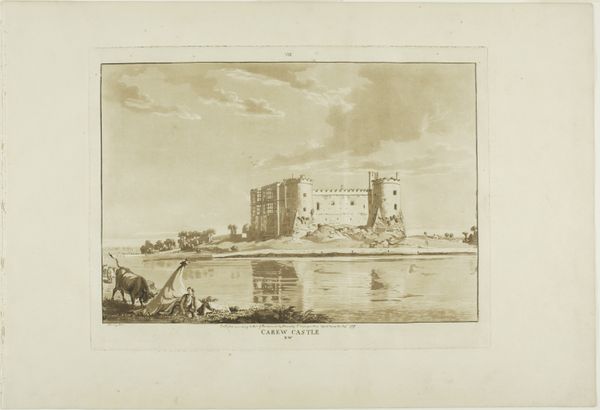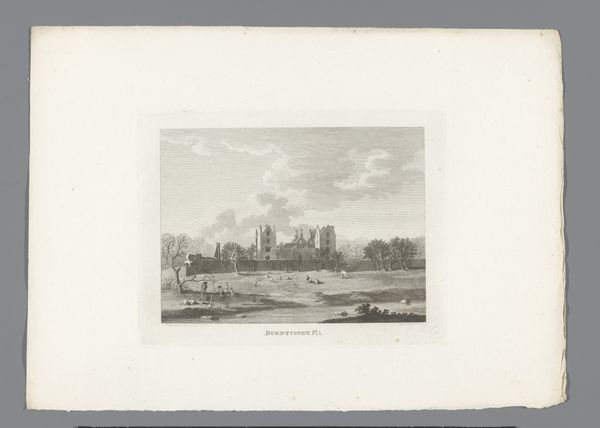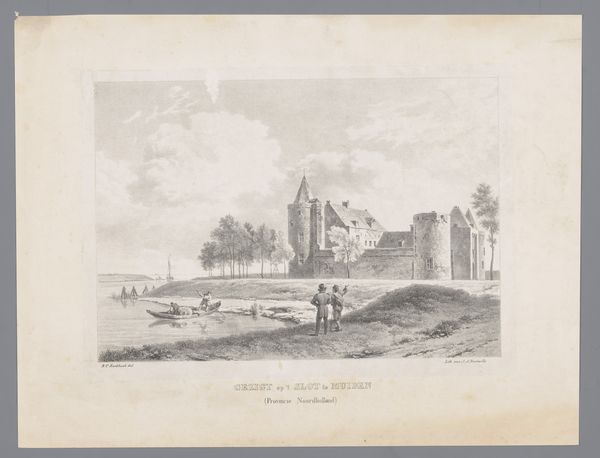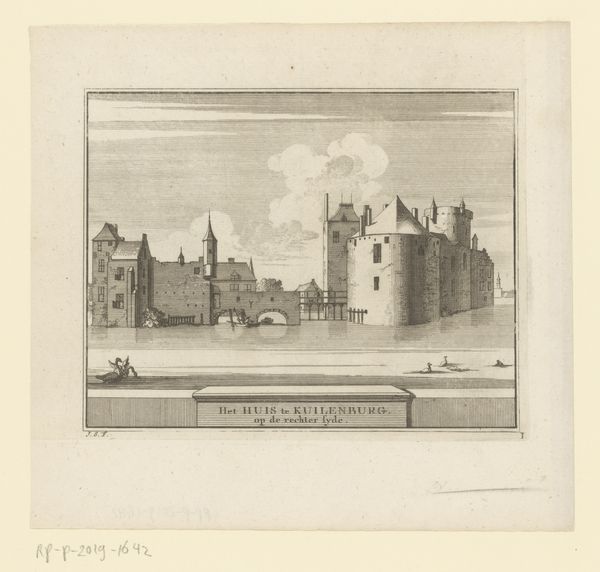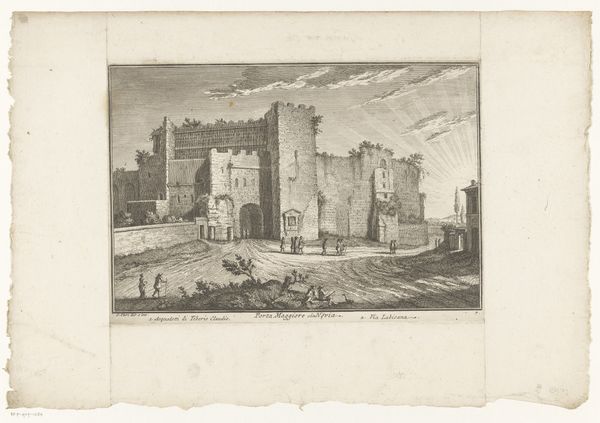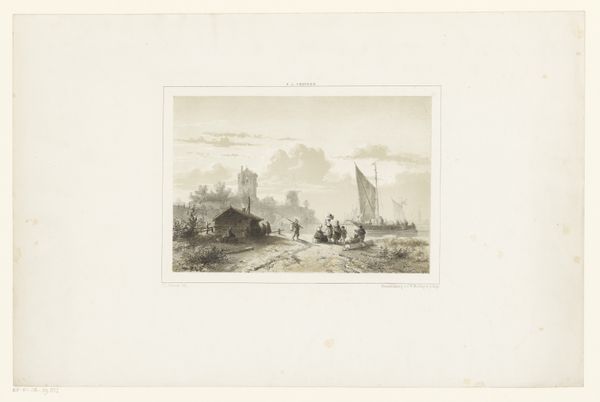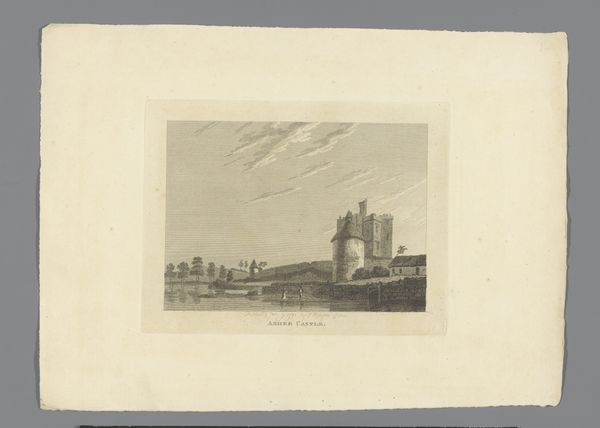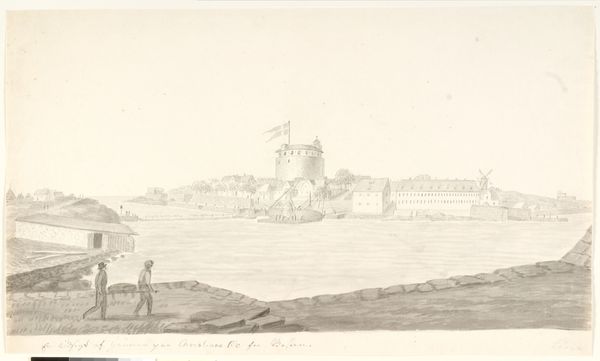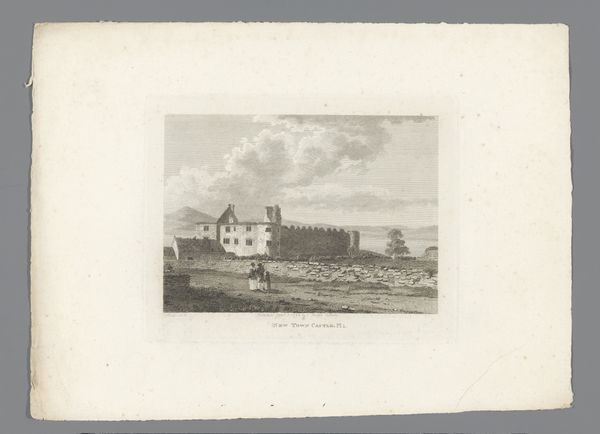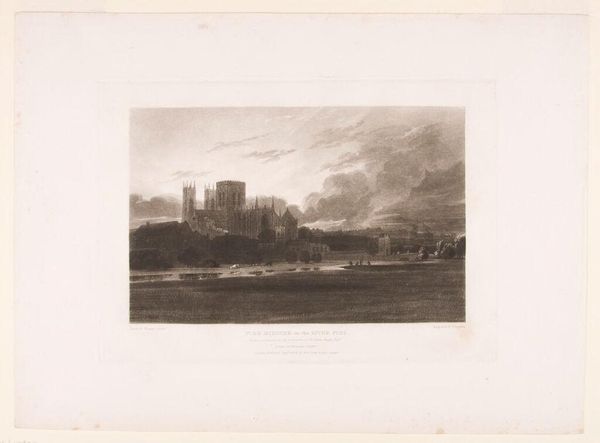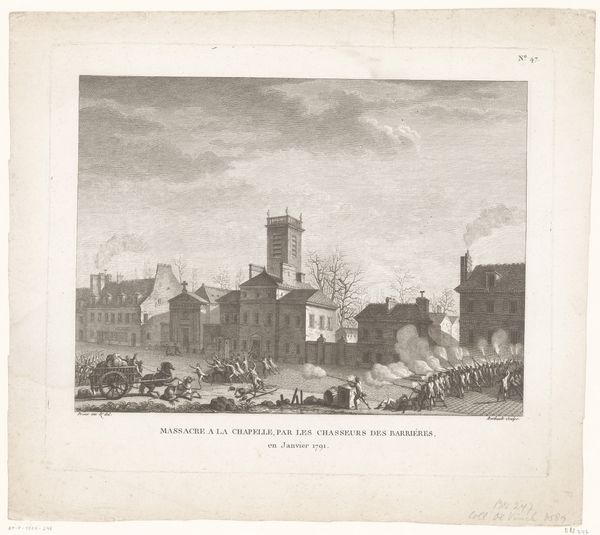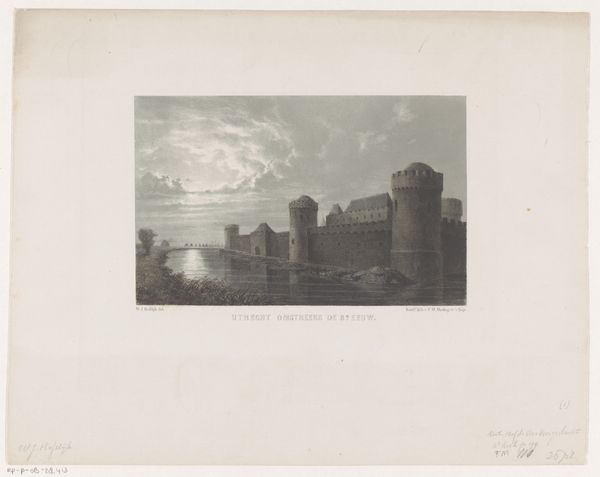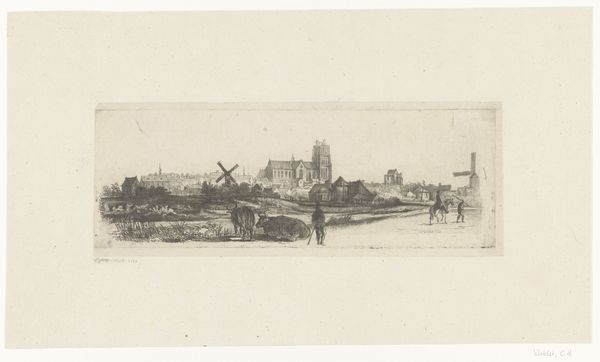
print, engraving
# print
#
landscape
#
romanticism
#
cityscape
#
engraving
Dimensions: height 151 mm, width 226 mm
Copyright: Rijks Museum: Open Domain
Curator: This is a print titled "Gezicht op Caernarfon Castle," created by William Radclyffe between 1839 and 1847. The medium is engraving, giving it a beautiful texture. What's your initial take on this artwork? Editor: It’s striking, with a kind of melancholic grandeur. The gray scale intensifies the heavy, imposing feel of the castle, yet the harbor scene is bustling with signs of work. I'm intrigued by the implied labor contrast. Curator: Radclyffe captures the romanticism popular at the time, idealizing historical sites, especially in the face of urbanization. Prints like this made these sites accessible to a wider audience, furthering nationalism. Editor: Indeed. I am interested in the labour involved in the engraving process itself. The precise lines to depict something so vast surely took painstaking hours to cut into the plate. Do we know about his workshop? The distribution of labor? Curator: While precise workshop details are sparse, we know reproductive engravings often involved multiple artisans specializing in different aspects. It democratized image dissemination. This made art accessible and helped forge a national identity around places like Caernarfon. Editor: And the materials? The paper quality itself speaks volumes, especially contrasted to cheap broadsides. There was a clear market segment he was aiming at—the rising middle class perhaps? Their consumption shaped not only taste, but national identity, like you say. Curator: Precisely! The image's function exceeds pure aesthetics. This work embodies ideas around British history, the sublime, and empire through widely distributed media. It’s visual propaganda almost. Editor: Right. Each impression represents labour hours but also furthers ideas around the past and a particularly crafted present moment too. It really does embed labour and class hierarchies within the work itself and the mode of dissemination. Curator: The convergence of Romantic aesthetic and commercial distribution makes this more than a picturesque vista. It embodies Victorian cultural values on a grand scale. Editor: It makes me wonder about Radclyffe’s intentions and if he realized quite how deeply enmeshed his production was with propagating a socio-political ideology. An aesthetic veneer barely masks complex layers when examined with a materialist lens.
Comments
No comments
Be the first to comment and join the conversation on the ultimate creative platform.
